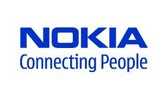 A nice piece of rumour was brought out by the fine folks at MoCoNews: allegedly Nokia is in talks with Facebook to cooperate on mobile. And if this was not enough, there is also talk about the mighty Finns taking an investment in Facebook, and this would arguably be somewhat more significant (in cash terms at least) than the $10m stake the Samwer brothers of Jamba-fame acquired last week.
A nice piece of rumour was brought out by the fine folks at MoCoNews: allegedly Nokia is in talks with Facebook to cooperate on mobile. And if this was not enough, there is also talk about the mighty Finns taking an investment in Facebook, and this would arguably be somewhat more significant (in cash terms at least) than the $10m stake the Samwer brothers of Jamba-fame acquired last week.
MoCoNews speculates that this could involve something as prominent as the YouTube button on the iPhone. This of course would appear to be a challenge given that most carriers will determine themselves what is and what is not on the handsets that are being sold through their retail outlets. But then Nokia has recently made strides on that front recently (as will be shown below).
A move with Facebook would fit in seamlessly with Nokia’s evolving strategy towards providing entertainment services rather than only being a hardware vendor (albeit the world’s largest by far with a whopping 38% market share globally): 2007 marked a year were Nokia acquired a number of companies and announced a number of initiatives and products that push the company way further down the service provision end than ever before: it acquired digital map specialist Navteq (Finland’s largest acquisition ever), bought the mobile marketing and advertising folks from Enpocket, it struck a content deal with Telefonica and another one with Vodafone, all gearing towards its comprehensive content offering Ovi (see here).
 Anssi Vanjoki, Nokia’s multimedia guru, went on record in saying that the Internet will be the tool that will tear down the carriers’ walled gardens. He continues to preach his ongoing theme (I heard about this the first time 2 years or so ago) that carriers are no entertainment companies and should therefore not fiddle with content. That might well be true, I guess. Now, if it comes to the Internet opening those walls, well, Facebook ranks #7 on the Alexa traffic charts. And, distinct to the (few) higher-ranked sites, Facebook’s clean set-up and approach would seemingly make a conversion to (higher-end) mobile handsets easier than with, say, MySpace (#6).
Anssi Vanjoki, Nokia’s multimedia guru, went on record in saying that the Internet will be the tool that will tear down the carriers’ walled gardens. He continues to preach his ongoing theme (I heard about this the first time 2 years or so ago) that carriers are no entertainment companies and should therefore not fiddle with content. That might well be true, I guess. Now, if it comes to the Internet opening those walls, well, Facebook ranks #7 on the Alexa traffic charts. And, distinct to the (few) higher-ranked sites, Facebook’s clean set-up and approach would seemingly make a conversion to (higher-end) mobile handsets easier than with, say, MySpace (#6).
Finally, Nokia tried to coin the phrase of “circular entertainment” (I blogged about it here where I mocked their “survey” approach) where they hold that, by 2012, 25% of all media would be created and consumed from within a circle of peers rather than from traditional media. If or if not the numbers were correct, the concept is very convincing (read e.g. Jaiku-founder Jyri Engstrom‘s rather insightful thoughts on object-centered sociality). Enter Facebook… ‘Nuff said, I guess…






